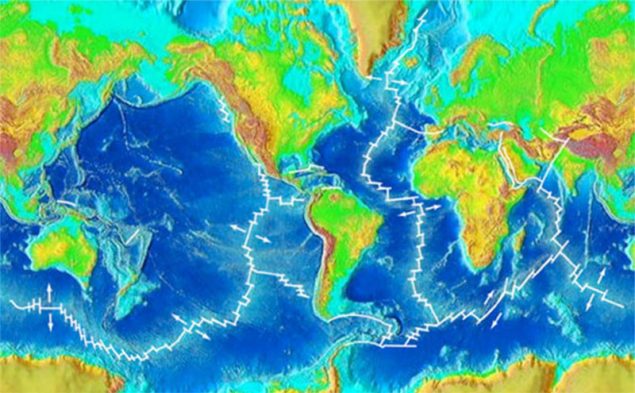
The mid-ocean ridge is a continuous range of underwater volcanoes and one of the most extensive chain of mountains on Earth, stretching nearly 65,000 kilometers (40,390 miles) and with more than 90 percent of the mountain range lying in the deep ocean.
Most of the active volcanoes on Earth are located along the aptly named “Ring of Fire” in the Pacific Ocean. Made up of more than 450 volcanoes, the Ring of Fire stretches for nearly 40,250 kilometers (25,000 miles), running in the shape of a horseshoe (as opposed to an actual ring) from the southern tip of South America, along the west coast of North America, across the Bering Strait, down through Japan, and into New Zealand.
The Ring of Fire is the result of plate tectonics. Much of the volcanic activity occurs along subduction zones, which are convergent plate boundaries where two tectonic plates come together. The heavier plate is shoved (or subducted) under the other plate. When this happens, melting of the plates produces magma that rises up through the overlying plate, erupting to the surface as a volcano.
Subduction zones are also where Earth’s deepest ocean trenches are located and where deep earthquakes happen. The trenches form because as one plate subducts under another, it is bent downward. Earthquakes occur as the two plates scrape against each other and as the subducting plate bends.

